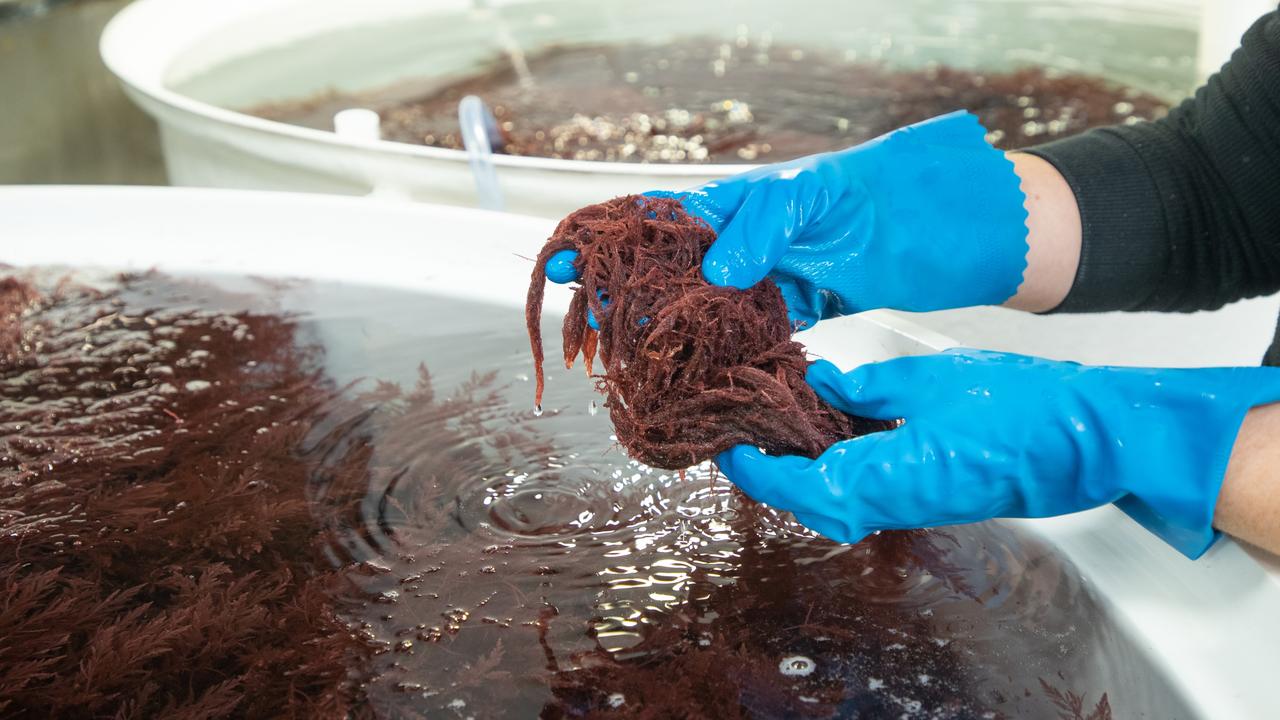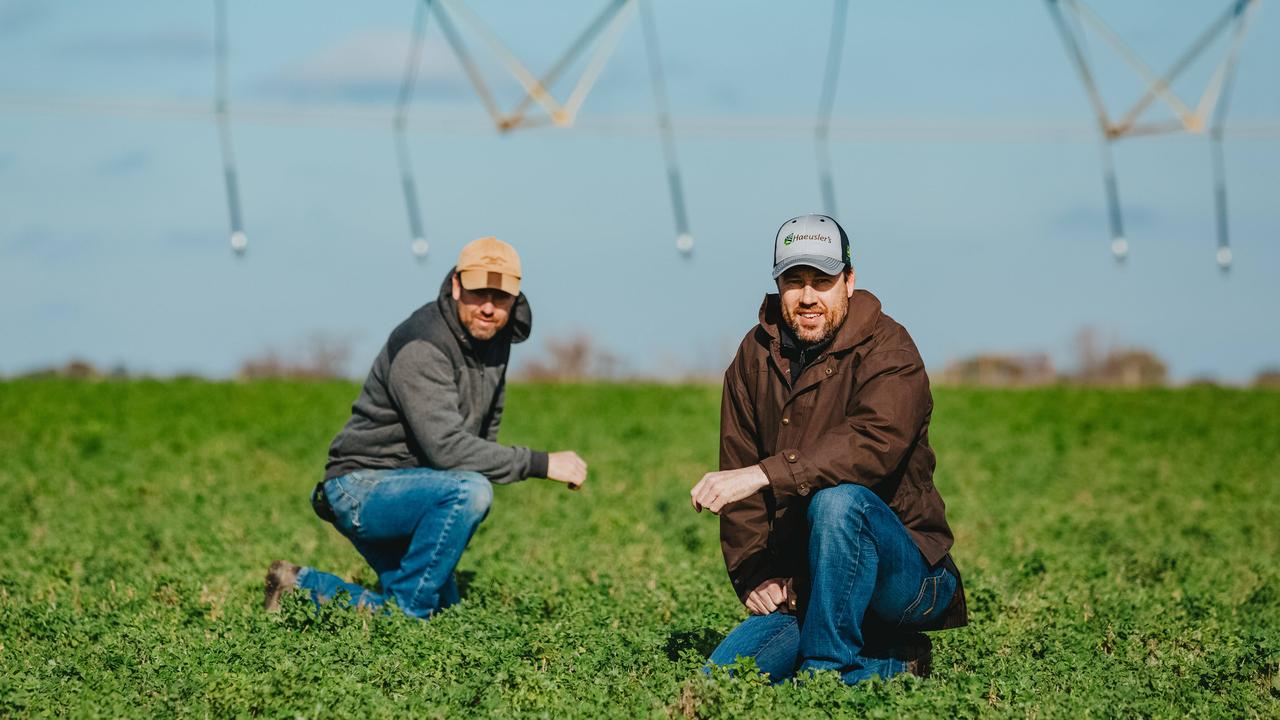Ivan and Julie Larcher are choosing small-scale production on their Ferme de L’or Blanc
WITH just a handful of cattle, one French farmer says he has found the secret to dairy success, while an Australian dairy expert says the same small-scale business can translate to local conditions.

IS IT possible to run a farm with just 10 milking cows?
French farmers Ivan and Julie Larcher do. Almost. This European winter they will add four more cows and, in two years, another seven. Their goal is to make a living, and a good one at that, with 25 at most.
In a world where farming success is said to be all about getting bigger, the Larchers are deliberately choosing small-scale, “farmstead” production on their Ferme de L’or Blanc or Farm of the White Gold.
They make butter, yoghurt, cheese and rice pudding in their on-farm dairy with milk from their Jersey herd and sell it at farmers’ markets (70 per cent of production is sold here) and supermarkets (20-25 per cent) near their 14-hectare farm 80km north east of Limoges in central France. Their ultimate goal is to process 100,000 litres of milk and turn over A$440,000 to $500,000 annually.
Ivan says their farm method has a simple philosophy - “With 10 cows we pay the bills”. “We don’t pay ourselves but we pay the bills,” he says. “With 15 cows we’ll be able to pay the bills, pay ourselves and potentially have a full-time employee.” They key to this will be feeding the cows on their own pastures - not buying in feed.

Both Ivan and Julie are dairy technicians. They studied at the same dairy school in the west of France and made their own cheese for many years. For 15 years, Ivan has travelled the world - the US, Ireland, Canada, The Middle East, Australia and France of course - advising artisan dairy producers how to finesse cheese, butter, milk, yoghurt and other dairy produce. Julie has also made cheese at home.
So they know how to turn milk into high-quality, sought-after food. Yet until the Larchers built their own dairy two years ago, they had never cared for cows.
“We both used to say our job starts when the milk is in the bucket, so now we have to learn the upstream part,” Ivan says. “This is a fantastic challenge to learn what grazing means, how pastures work, how you feed cows with grass. We refuse the easy system to feed them with silage and concentrates because that creates more problems than advantages quality wise and food safety wise. It affects the flavour profile of the milk and creates technological problems in the cheese.”
France offers several advantages for young people getting into dairy farming. If you have a solid five-year business plan that includes value-adding - making cheese or butter or yogurt rather than simply selling the milk - and an agriculture degree, you could earn a one-off payment of 15,000 in government support. Interest payments on loans of up to 200,000 is also available from the government. Some regional authorities also fund up to 45 per cent of the cost of value-adding equipment, for, example an on-farm cheese house or slaughter house or dairy, Ivan says.
“The more interesting the project, the younger you are, the more degrees you have in agriculture and so on, the more you get,” Ivan says. France also has a long history of small, specialised dairy production, owing to rules around inheriting farms which has ensured the existence of small farms. Farmstead cheesemakers (those who produce milk to make their own cheese, butter, yoghurt etc) number about 5000 while ‘artisan’ cheesemakers (those who buy in milk to make cheese) number about 550.
Support for local products is also strong in France where history has almost genetically wired the French to buy locally. Supermarkets stock local food. And production tends to be specialised. Farmers near Camembert make Camembert cheese, a legacy from when the spread of knowledge was restricted by how far a horse could travel in a day.

To create a successful dairy business on a small scale, producing dairy products to sell locally, Ivan says farmers need different cows with different feeding regimes to big farms. The emphasis is on higher milk solids rather than volume. Expense control is vital.
Large farms with big vet bills might consider the switch. “Having less cows and spending more time with them might be preferable to having a big herd and big vet bills,” Ivan says. But he cautions against rushing in.
“It’s not the kind of job that suddenly because you don’t make money on your dairy farm (from producing milk alone) you say I’m going to make all my milk into cheeses and multiply return 10 times and be rich. It doesn’t work like this because there is so much commitment, investment and knowledge.”
Farmer and cheesemaker Carla Meurs, who heads the Australian Specialist Cheesemakers Association, says knowledge and experience, plus careful product selection and access to farmers’ markets are crucial for those wanting to establish small scale, value-adding, viable dairy farms in Australia.
“If you can make good cheese or butter or yoghurt, there will be a market for it,” Carla says.
As for specific requirements, Carla says you will need land and the animals - goats or sheep or cows.
“They also need to understand it’s a hands-on business and they need to know how to look after their animals. In many countries, France, Ireland, the US and the UK young people trade their labour to get that experience.”
Carla and her partner, Ann-Marie Monda, developed their farming and cheese-making skills by working on farms for four years. “People expect they will be able to go and do a course and that will teach them enough,” Carla says. “In France there are more sophisticated courses and more specialised consultants. We don’t have that in Australia and we would like that to change.”
It’s also best to make a product or cheese type that’s not available locally, she says. “If a supermarket near you is already saturated with the cheese or product you want to make, then don’t. You need to have a point of difference in the market and find a niche for your products.”
Meurs believes the opportunities are there, that the market for locally produced milk from goats and cows has not been met by a long shot, let alone the market for value-added products like cheese, butter and yoghurt.
“Milk that returns 30 cents a litre to the farmer could return $2 or $3 a litre if it’s bottled and sold locally and even more if it’s made into yoghurt. Two hundred litres of milk might make you $1000 instead of $100 and if you sold that much a week that would get you going.”

A case in point
Paul and Kerry Wilson were milking 350 cows and supplying their local milk co-operative company Norco when they decided to scale down and specialise.
“We always wanted to do on-farm tourism and bulk milk prices were pretty average - about 40 cents a litre,” Paul says. “Now we sell our fresh bottled milk directly into the market for $4.50 for two litres.”
The couple milk just 35 cows and 200 goats on their Nimbin Valley Dairy farm near Nimbin. Their cows produce about 450 litres daily in total and the goats about 400 litres. Some is fed to calves and kids. Some is bottled and sold, mostly at local farmers’ markets. Packaging, labour and other costs are extracted from the $2.25 a litre return.
From the rest, they make about 80kg of cow’s cheese daily and 30 to 50kg of goat’s cheese, plus a drinking yoghurt called kefir and cow’s milk yoghurt. Some is sold locally, again at farmers’ markets, and to local restaurants and pubs. Some goes to Sydney to health food shops and wholesalers. Their goal is to have their own cellar door and offer on-farm sales.
“Norco were doing the best they could to give us a good price, but they were selling into supermarkets and there was always downward pressure on returns,” Paul says.
The farm employs two full-time staff in the cheese room and two full-time on the farm.
“We started in 2006,” Paul says. “It’s viable but it’s very hard work. If we added our time and labour costs, it wouldn’t be viable at this stage but I can see a time when this will change.” The couple love the interaction with the world beyond the farm that cheesemaking brings - other cheesemakers, technicians, customers and distributors.
Dairy Australia funded Paul’s cheese-making training with a cheesemaker scholarship, valued at about $15,000. He studied cheese making at the National Centre for Dairy Education in Werribee and then worked at a cheese factory in Murray Bridge, South Australia. He also won an Agrifood Skills Australia scholarship to study on-farm energy-from-animal-waste generation, travelling to China and Germany.
Paul says the idea of a large-herd dairy farmer halving his or her herd, clearing debt and buying a truck to sell their milk door to door might be appealing to some, but it requires careful financial planning.
“A lot of dairy farms carry a lot of debt,” he says. “It’s a capital-intensive industry but when you want to jump off that treadmill it’s not always easy. It depends how much debt you can get rid of.”
He says access to farmers’ markets, tourists and having good products is essential for their business. “Have one or two cheeses that are your niche by all means, but you need to have ‘bread and butter’ crowd-pleasers to pay the bills.”


